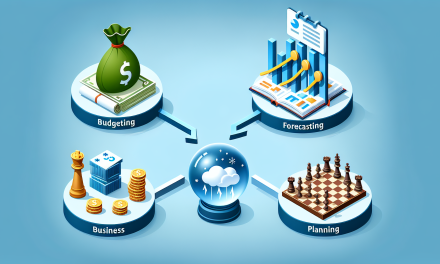Table of Contents
- Introduction
- Understanding Leadership Dynamics
- The Role of Team Conferences
- Key Elements of Effective Leadership
- Steps for Organizing a Successful Conference
- Challenges and Solutions
- Explore More Resources
- FAQs
- Conclusion
Introduction
In today’s fast-paced business environment, the dynamics of leadership play a crucial role in determining the success of teams and organizations. Effective leadership fosters an environment where collaboration, innovation, and productivity thrive. The team group conference often acts as a cornerstone for enhancing these dynamics, offering an opportunity for leaders and team members to align their goals, resolve conflicts, and develop strategic plans together.
Understanding Leadership Dynamics
Leadership dynamics refer to the interactive process between leaders and their teams, shaping how decisions are made and how tasks are executed. Understanding these dynamics involves recognizing various leadership styles and their effects on team culture. A leader’s approach may range from autocratic to democratic, with each style influencing team dynamics differently.
The Importance of Leadership in Team Settings
At the core of group synergy lies effective leadership. When leaders communicate a clear vision and show empathy toward team members, they empower individuals to contribute their best. Furthermore, leaders must adapt their strategies based on the team’s feedback, promoting a culture of inclusiveness that fosters creativity.
The Role of Team Conferences
Team conferences serve as pivotal gatherings where ideas can flourish and plans come to fruition. They provide a platform for all voices to be heard, ensuring that every team member feels valued and respected. By establishing these communal meetings, leaders can cultivate stronger relationships, promote transparency, and tackle challenges collaboratively.
Why Hold Team Conferences?
Conferences encourage open dialogue and collective problem-solving. They not only help elucidate common objectives but also facilitate knowledge sharing and team bonding. Moreover, these gatherings can be a great way to celebrate achievements, which strengthens the team’s morale.
Key Elements of Effective Leadership
To successfully lead a conference, being aware of several key leadership elements is essential. These factors significantly impact team dynamics and the overall effectiveness of the conference.
1. Communication Skills
Effective communication can make or break a team meeting. Leaders must articulate their messages clearly and encourage feedback, ensuring that discussions are inclusive and constructive.
2. Emotional Intelligence
Understanding and managing emotions is vital for leaders. Emotional intelligence allows leaders to navigate interpersonal relationships judiciously and empathetically, leading to a more engaged team.
3. Conflict Resolution
Conflicts are inevitable in any team. Leaders who can effectively mediate these disagreements create a healthier work environment and reinforce trust among team members.
4. Vision and Strategic Planning
Successful leaders provide a transparent vision for the future. Through strategic planning, they help teams focus on common goals and align their efforts accordingly.
Steps for Organizing a Successful Conference
Organizing a team conference involves careful planning and execution. Here are several steps to consider:
1. Define the Purpose
Before anything else, clarifying the main objectives of the conference is essential. Are you seeking to solve a problem, brainstorm new ideas, or celebrate milestones?
2. Create an Agenda
Having a structured agenda helps keep the discussion focused and allows everyone to prepare in advance. Ensure that the agenda includes time for open discussions and feedback.
3. Choose the Right Venue
Selecting a suitable venue can significantly impact the conference’s atmosphere. A comfortable and accessible location caters to participants’ needs and enhances engagement.
4. Invite the Right People
Gathering the right mix of people can lead to valuable discussions. Consider inviting stakeholders who can contribute unique insights.
5. Facilitate, Don’t Dominate
A leader’s role during the conference is to facilitate discussion rather than monopolize it. Encouraging participation from all attendees leads to richer dialogue.
Challenges and Solutions
Even with thorough planning, challenges may arise. Here are some common issues and their respective solutions:
1. Limited Participation
If team members are reluctant to engage, it’s critical to identify reasons. Creating a safe environment where everyone feels valued can help mitigate this challenge.
2. Time Management
Conferences can easily run over schedule. Allocating specific time slots for each agenda item ensures that every topic gets addressed without dragging on unnecessarily.
3. Lack of Clarity
If discussions become muddled, providing clarifying summaries at intervals can help keep everyone on the same page.
Explore More Resources
For further readings and insights into enhancing leadership and team dynamics, check out these valuable resources:
- Dynamics of Leadership: Enhance Team Group Dynamics Conference
- Mastering Leadership: Dynamic Decision Making and Effective Strategies for Success
- Navigating Financial Success: Insights from the Corporate Financial Planning and Budgeting Conference
- Essential Guide to Confined Space Awareness and Compliance: Best Practices for Safe Entry
- Unlocking Your Potential: Discover the Power of the Business Brain Training Development Conference
- Mastering Your Time: Effective Task Management Skills for a Productive Life
FAQs
What are the benefits of holding team group conferences?
Holding team conferences promotes open communication, strengthens relationships, resolves conflicts, and aligns goals among team members, leading to improved collaboration and productivity.
How often should teams hold conferences?
The frequency of conferences can vary depending on the team’s needs. Regular quarterly or bi-monthly meetings often suffice, but it’s important to maintain flexibility based on ongoing projects and team dynamics.
Conclusion
To wrap up, the dynamics of leadership and the role of team group conferences are interlinked in powerful ways. Through effective communication, emotional intelligence, and strategic planning, leaders can enhance team performance significantly. Ultimately, the success of a team relies not only on its collective skills but also on the leadership that guides its direction.





